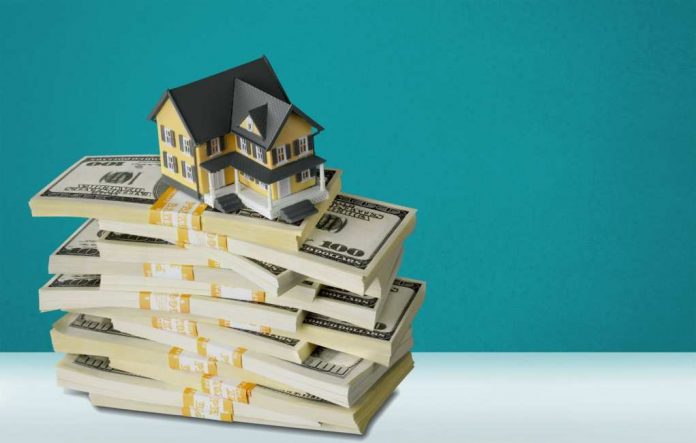
Introduction
If you are a homeowner and you want to save money, then you should consider refinancing your mortgage. This basically means that you will pay off an existing loan that you have and replace it with a new loan. Many homeowners refinance because there are a few benefits that come their way. With refinanced mortgages, you will be able to get a lower interest rate and reduce the duration of your mortgage. Also, if you find yourself in need of fast cash of a large amount, then you can always reach into the cookie jar, which is your home equity.
Mortgage refinancing can reach from 3% to 6% of your loan’s principal. As with an original loan, you will need to follow the steps and go through the same process. (The Investopedia Team)
How Can You Successfully Refinance Your Mortgage?
There are many factors that could lead to a successful mortgage refinance. You just need to make sure the timing aligns with your needs. The first thing you should determine is the length of time that you plan on living in your home. If you have owned the property for a long period of time, then you should consider refinancing. It will be easier since you are a long-term homeowner of the property. You should also consider current interest rates, since a lower interest rate allows you to gain home equity at a faster pace. Also, you should think about closing costs. If you will lose more than you will gain, then maybe refinancing your mortgage is not the ideal solution for you. (Banton)
1. Find Out What Your Goals Are in Refinancing
Before you decide on refinancing your mortgage, you should think about what you want to gain from the refinancing. If you want to pay your loans at a faster pace, then you should consider refinancing to a short-term mortgage. Or, if you plan on paying lower payment per month, then you should consider refinancing to a longer-term mortgage. Another option for lower monthly payments is refinancing your mortgage with the same term, but at a lower interest rate. Additionally, if you want to get a stable lower interest rate, then you should refinance a shorter-term mortgage or a mortgage with the same term at a lower interest rate. It all depends on what you want to achieve from refinancing your mortgage.
2. Determine Which Refinance Option You Want
You may not know this, but there are different types of refinance options. Each type of refinance option can help you in your current financial situation, if you qualify for it. The first type of refinance is the rate-and-term, which will help you if you want a typical refinance. You just need to make sure that you have a good financial profile before you apply. As for the cash-out, this type will help you if you need cash. You may qualify for it, but only if you have equity in your property. The cash-in type will help you build home equity to refinance, which you can qualify for if you can pay a large amount of money at once.
As for the no-closing-cost refinance option, you should consider it, if you cannot afford closing costs. But, you will need to pay a higher payment per month. If you do not want an appraisal, then you should consider a streamline refinance. But, you must have an existing FHA, VA, or USDA mortgage.
3. Calculate How Much Equity You Have In Your Home
Your home equity is the relationship between how much you owe for your mortgage and how much your property is worth. Many lenders prefer borrowers that have 20%, or more, home equity. In order to reach that rate, you will need to know how much home equity you have. You can find out your home equity by calculating your loan-to-value ratio (LTV), or by crunching the numbers manually.
4. Find Out Your Credit Score (And Find Out If You Need To Improve It)
You should definitely check your credit score, before you refinance your mortgage. It is important that you have a good credit score, since that is the most reliable way lenders understand your financial situation. Your credit score is the main factor that defines your ability to make payments in time. If you have a good credit score and you are constantly improving, then you can get a good interest rate.
5. Acquire Several Quotes From Several Lenders (Don’t Put All Your Eggs In One Basket)
You can always refinance your mortgage with the same lender that you started with for your primary mortgage. But, you do not necessarily need to do that. You should consider looking through multiple lenders and getting quotes from them. That way, you can compare between interest rates and closing costs. When you are comparing closing costs, make sure you look at both the interest rates and the annual percentage rate. (The annual percentage rate is the interest rate and the cost of other financial aspects.)
6. Keep In Mind Closing Costs
Make sure you keep in mind that closing costs could be expensive. Since refinancing your mortgage has the same process as a regular mortgage, closing costs are included. Typically, refinancing closing costs could reach from 3% to 6% of your loan’s primary. If you find that you can afford it, then you can refinance your mortgage and adjust your budget to the closing cost.
7. Prepare Yourself and Your Home for A Home Appraisal
In order to finalize your refinancing, you need to prepare yourself for a home appraisal. Just like with a principal mortgage, an appraiser will conduct a visit to your home to assess your loan-to-value (LTV) ratio. To help your odds, you should clean up your home, both inside and out. (Remember the more your home is worth, the better.)
Conclusion
If you want to finish your loan faster or pay lower monthly payments, then you should really consider refinancing your mortgage. You will have nothing to lose and it will significantly improve your financial situation!
Works Cited
Banton, Caroline. Is Refinancing My Mortgage a Good Idea? 11 08 2021. 15 09 2021 <https://www.investopedia.com/ask/answers/09/refinancing-mortgage.asp>.
The Investopedia Team. When to Refinance Your Mortgage. 30 06 2021. 15 09 2021 <https://www.investopedia.com/mortgage/refinance/when-and-when-not-to-refinance-mortgage/>.



























